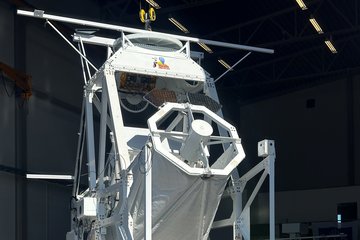All genres
141.
Talk
Saturn's magnetic field and dynamo. Saturn Science Conference, Madison, WI, USA (2014)
142.
Talk
Dynamo models: from planets to stars. Geophysical and Astrophysical Flows and Dynamos, Newcastle, UK (2014)
143.
Talk
Magnetic fields a window into the deep interiors of planets. Workshop on Structure and Dynamics of the interior of rocky planets. Structure and Dynamics of Earth-like Planets, Paris, France (2014)
144.
Poster
Simultaneous retrieval of the lunar solid body tide and topography from laser altimetry. AGU Fall Meeting , online (2020)
145.
Poster
Simultaneous retrieval of the lunar solid body tide and topography from laser altimetry. EGU General Assembly , online (2020)
146.
Poster
Prospects for the Measurement of Mercury's Solid Body Tides with the BepiColombo Laser Altimeter. 51st Lunar and Planetary Science Conference, online (2020)
147.
Poster
Deodynamo Models with a Stable Layer and Meterogeneous CMB Heat Flow. 16th Symposium of SEDI (Study of the Earth's Deep Interior), Edmonton, Canada (2018)
148.
Poster
Retrieval of h2 from laser altimetry. Workshop in Geology and Geophysics of the Solar System, Petnica, Serbia (2018)
149.
Poster
Retrieval of Mercury’s h2 from BepiColombo Laser Altimeter data. European Planetary Science Congress, Riga, Latvia (2017)
150.
Poster
Retrieving the planetary h2 tidal Love number from laser altimetry data. 1st IUGG Symposium on Planetary Science, DLR Adlershof, Berlin, Germany (2017)
151.
Poster
Retrieval of Mercurys h2 from BepiColombo Laser Altimeter data. European Planetary Science Congress, Riga, Latvia (2017)
152.
Poster
Retrieving the planetary h2 tidal Love number from laser altimetry data. Rocks \& Stars II, Göttingen, Germany (2017)
153.
Poster
Magnetic field morphology of the ice giants linked to their internal structure. 5th Meeting of the DFG-SPP Planetary Magnetism, Nördlingen, Germany (2015)
154.
Poster
The Submillimetre Wave Instrument on JUICE. Ground and space observatories: a joint venture to planetary science, Santiago, Chile (2015)
155.
Contribution to an Encyclopedia
Planetary Magnetic Fields and Dynamos. In: Oxford Research Encyclopedia: Planetary Science (Ed. Oxford University Press). Oxford Univ. Press, Oxford (2019)











